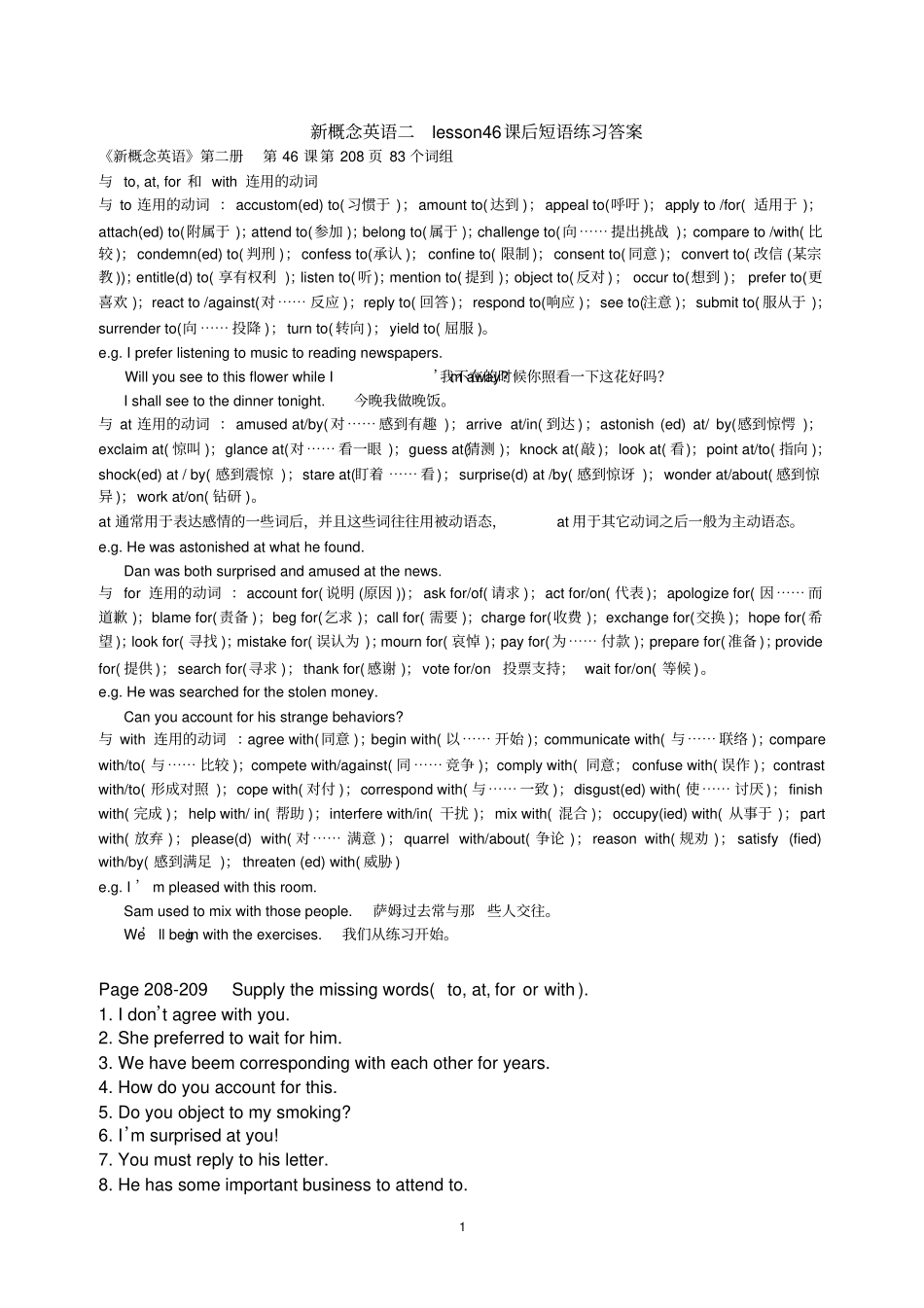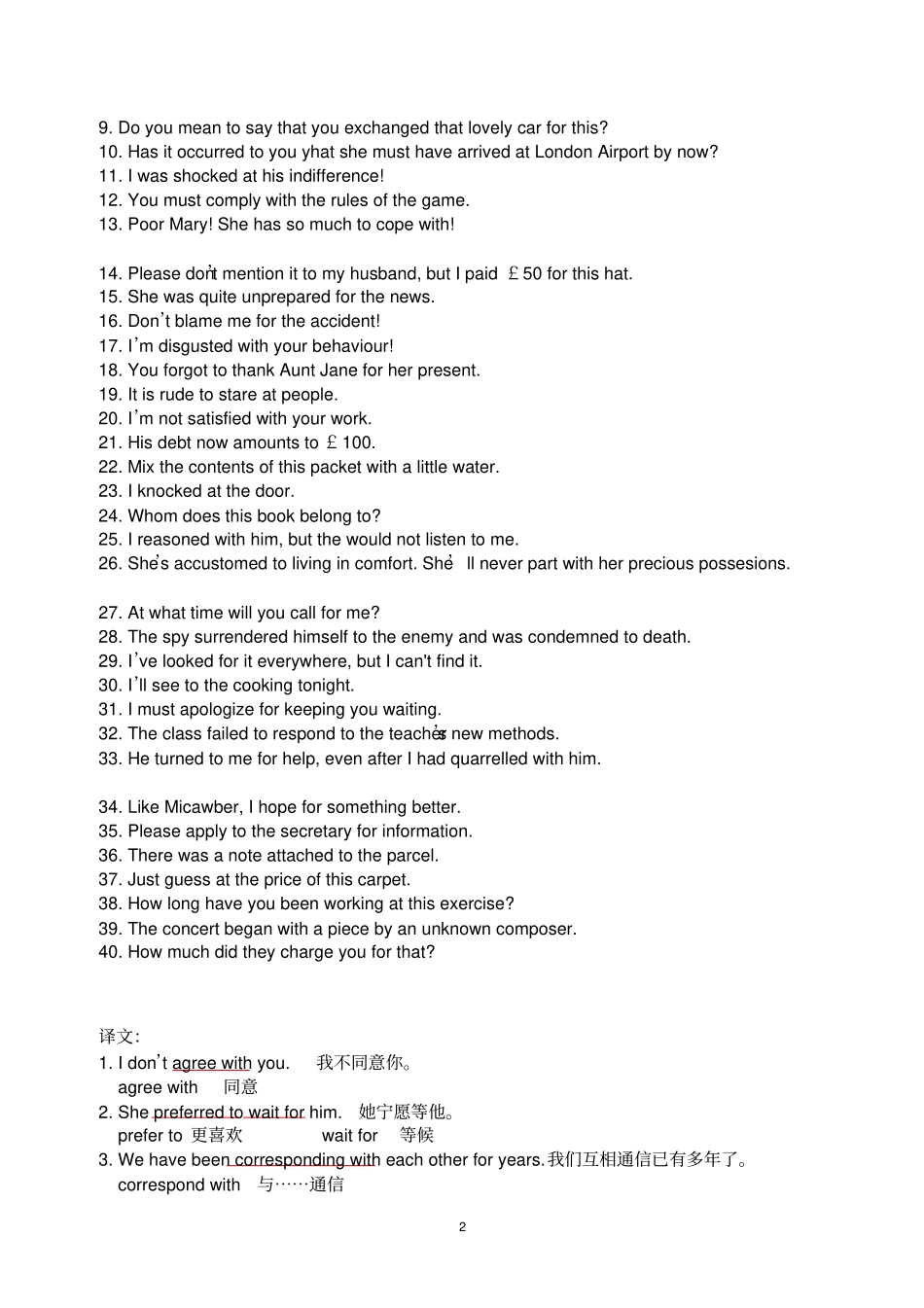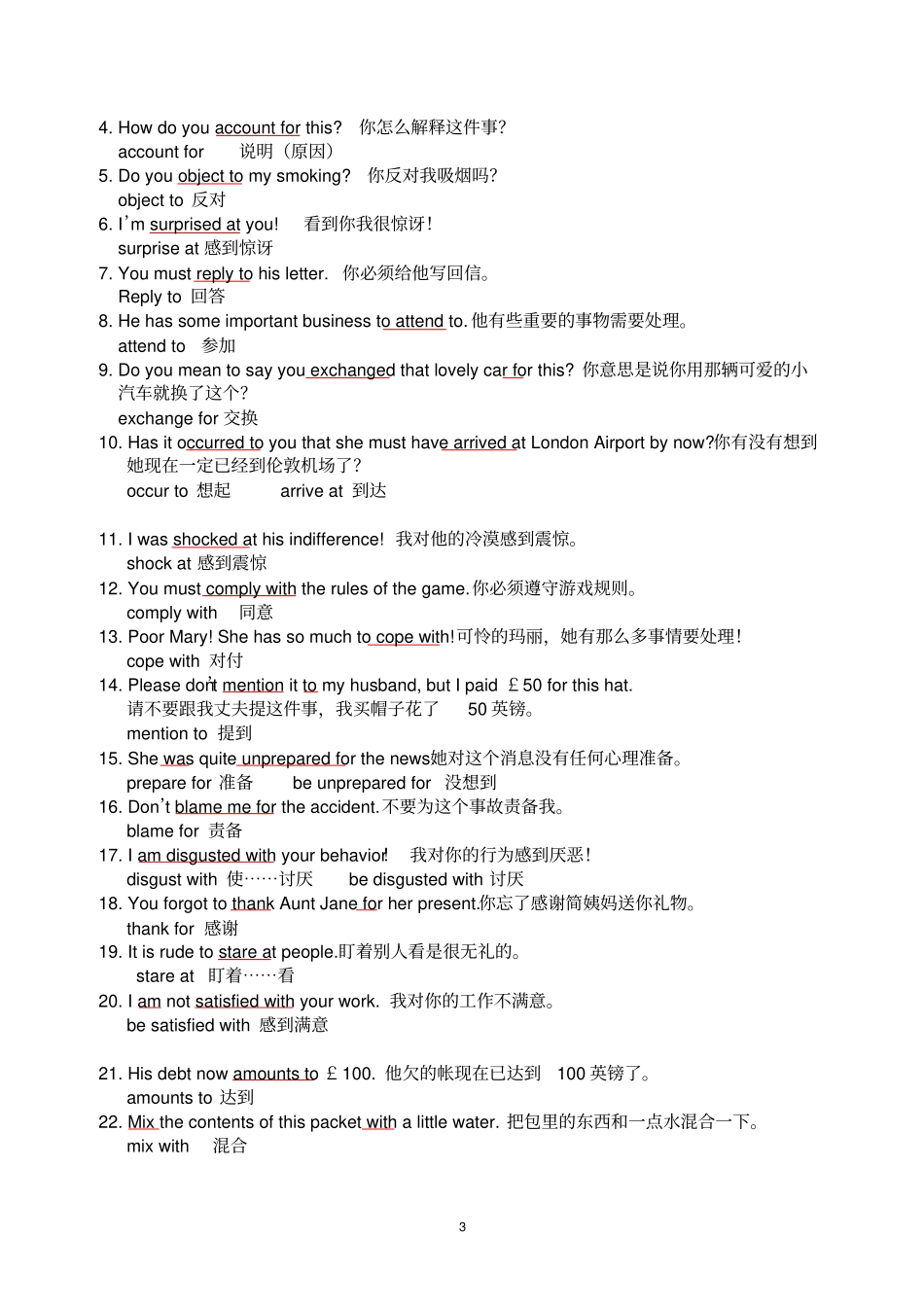1 新概念英语二lesson46课后短语练习答案《新概念英语》第二册第 46 课第 208 页 83 个词组与 to, at, for 和 with 连用的动词与 to 连用的动词 :accustom(ed) to( 习惯于 );amount to( 达到 );appeal to(呼吁 );apply to /for( 适用于 );attach(ed) to(附属于 );attend to(参加 );belong to( 属于 );challenge to(向⋯⋯ 提出挑战 );compare to /with( 比较 );condemn(ed) to( 判刑 );confess to(承认 ); confine to( 限制 );consent to( 同意 );convert to( 改信 (某宗教 ));entitle(d) to( 享有权利 );listen to( 听);mention to( 提到 );object to( 反对 ); occur to(想到 ); prefer to(更喜欢 );react to /against(对⋯⋯ 反应 );reply to( 回答 );respond to(响应 );see to(注意 );submit to( 服从于 );surrender to(向 ⋯⋯ 投降 );turn to( 转向 );yield to( 屈服 )。e.g. I prefer listening to music to reading newspapers. Will you see to this flower while I’ m away?我不在的时候你照看一下这花好吗?I shall see to the dinner tonight. 今晚我做晚饭。与 at 连用的动词 :amused at/by( 对⋯⋯ 感到有趣 );arrive at/in( 到达 );astonish (ed) at/ by(感到惊愕 );exclaim at( 惊叫 );glance at(对⋯⋯ 看一眼 );guess at(猜测 );knock at(敲 );look at( 看);point at/to( 指向 );shock(ed) at / by( 感到震惊 );stare at(盯着 ⋯⋯ 看);surprise(d) at /by( 感到惊讶 );wonder at/about( 感到惊异 );work at/on( 钻研 )。at 通常用于表达感情的一些词后,并且这些词往往用被动语态,at 用于其它动词之后一般为主动语态。e.g. He was astonished at what he found. Dan was both surprised and amused at the news. 与 for 连用的动词 :account for( 说明 (原因 ));ask for/of( 请求 );act for/on( 代表 );apologize for( 因⋯⋯ 而道歉 );blame for( 责备 );beg for(乞求 );call for( 需要 );charge for(收费 );exchange for(交换 );hope for(希望 );look for( 寻找 );mistake for( 误认为 );mourn for( 哀悼 );pay for(...


